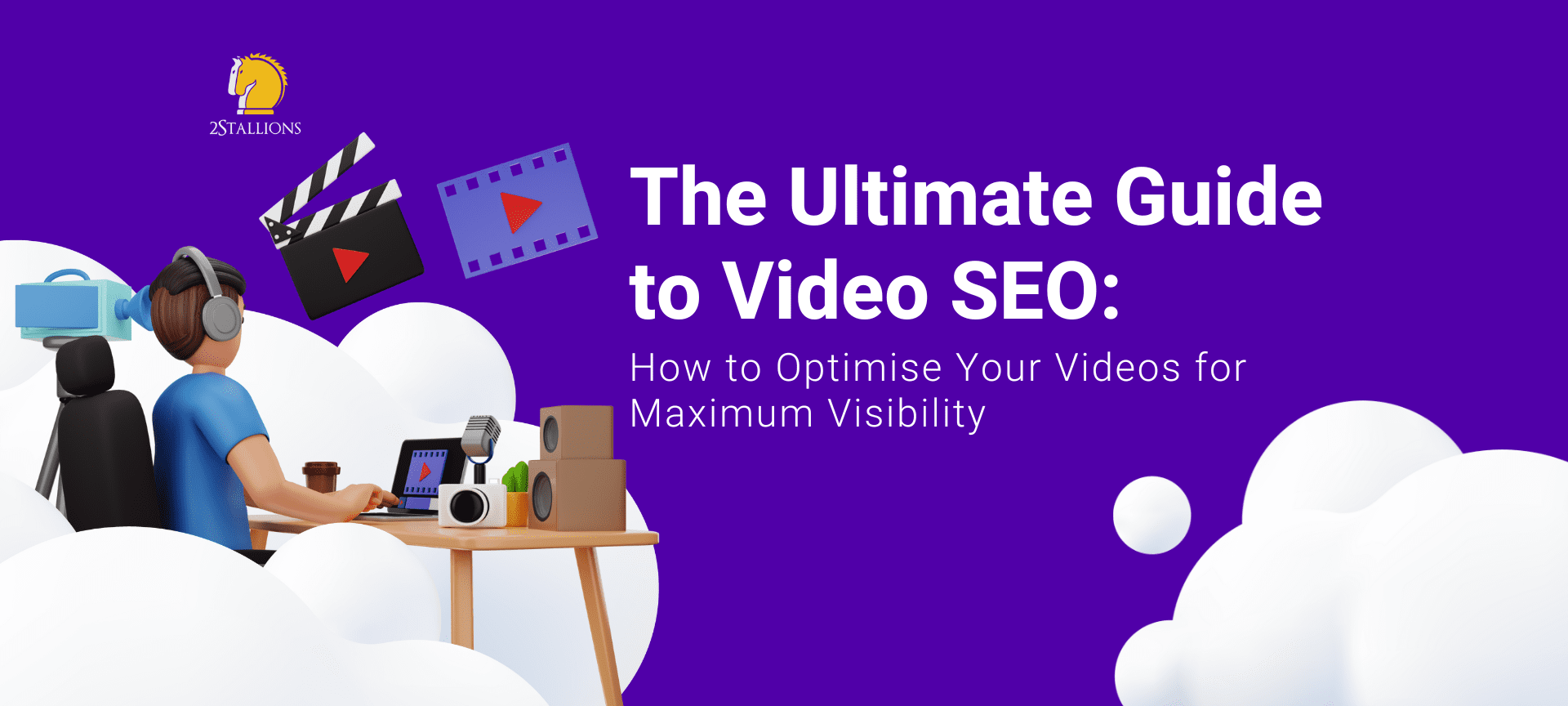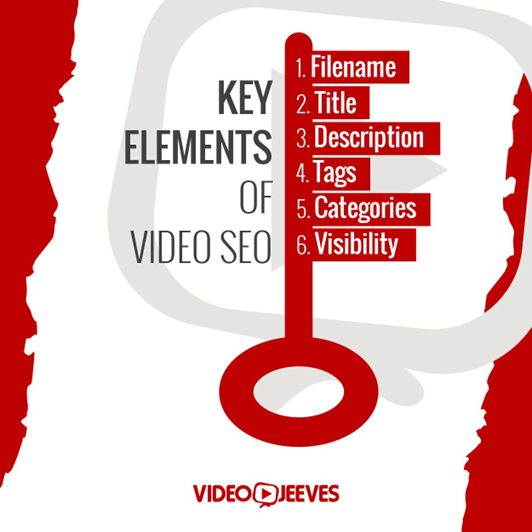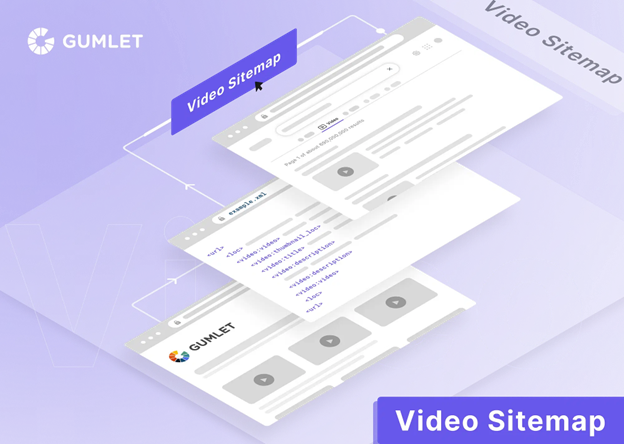Content
SHARE

Video SEO is an essential component of any successful digital marketing strategy. With the ever-increasing popularity of video content, it is crucial to optimise your videos for maximum visibility. In this ultimate guide, we will explore the basics of video SEO, the key elements to focus on, and the steps you need to take to ensure that your videos reach the right audience.
Understanding the Basics of Video SEO
Before diving into the intricacies of video SEO, let’s first understand what it is and why it is important. Video SEO refers to optimising your videos to appear higher in search engine results pages (SERPs), resulting in increased visibility and organic traffic. Video SEO involves various techniques and strategies to enhance your video content’s relevance, visibility, and discoverability. When done correctly, video SEO can improve the chances of your target audience finding and watching your videos.
With the rising popularity of video content platforms such as YouTube, Vimeo, and TikTok, it has become essential for businesses to optimise their videos to stand out from the crowd. By investing time and effort into video SEO, you can increase the chances of your videos getting more views, engagement, and conversions. But what exactly is the role of video content in digital marketing? Let’s explore further.
The Role of Video Content in Digital Marketing
Video content has quickly become one of the most effective mediums for communicating with your audience. Videos can profoundly impact brand awareness, customer engagement, and overall marketing success when implemented correctly. By incorporating video content into your digital marketing strategy, you can effectively convey your brand message, build trust, and establish a deeper connection with your target audience. One of the key advantages of video content is its ability to capture and retain viewers’ attention. In today’s fast-paced digital landscape, where attention spans are shrinking, videos have the power to captivate and engage audiences in ways that other forms of content cannot. Whether through compelling storytelling, visually appealing graphics, or informative demonstrations, videos can leave a lasting impression on viewers.
Moreover, video content has a higher chance of going viral than other content types. The shareability factor of videos makes them highly shareable on social media platforms, leading to increased brand exposure and reach. When a video resonates with viewers, they are more likely to share it with their friends, family, and followers, amplifying your brand’s message and increasing its visibility. Additionally, video content allows for better communication of complex ideas and concepts. Some topics are better explained through visuals and demonstrations rather than written text. By leveraging the power of video, you can simplify complex information and make it more accessible and understandable for your audience.
Furthermore, videos can evoke emotions and create a personal connection with viewers. Through storytelling and visual elements, videos can elicit joy, empathy, or excitement, building a strong bond between your brand and your audience. Viewers who feel emotionally connected to your brand are more likely to trust and engage with your content, leading to increased brand loyalty and advocacy. Video content plays a crucial role in digital marketing. By incorporating videos into your marketing strategy and optimising them using video SEO techniques, you can effectively reach and engage your target audience, increase brand awareness, and drive organic traffic to your website or social media channels.
Key Elements of Video SEO
Now that we understand the importance of video SEO let’s explore the key elements that play a crucial role in optimising your videos for maximum visibility. Video SEO, or search engine optimisation, is optimising your videos to improve their visibility and ranking on search engine results pages (SERPs). With the increasing popularity of video content, it has become essential for businesses and content creators to implement effective video SEO strategies to reach their target audience.
When it comes to video SEO, your video titles and descriptions are of paramount importance. These elements provide valuable information to both search engines and viewers, helping them understand the content and context of your videos. Ensure that your titles are clear, concise, and keyword-rich while your descriptions provide a comprehensive overview of what viewers can expect. But video SEO doesn’t stop at titles and descriptions. There are several other key elements that you need to consider to optimise your videos effectively.
Importance of Video Titles and Descriptions
Video titles and descriptions serve as the first point of contact between your video and potential viewers. They act as a hook, enticing viewers to click and watch your video. Therefore, it is crucial to craft compelling titles and descriptions that accurately represent the content of your videos. When creating video titles, it’s essential to include relevant keywords that align with the topic of your video. This helps search engines understand the context of your video and improves its chances of appearing in relevant search queries.
Additionally, using concise and attention-grabbing titles can increase your videos’ click-through rate (CTR), attracting more viewers. Similarly, video descriptions are vital in providing additional information about your video. They should be well-written, informative, and engaging. Including relevant keywords in your descriptions can also improve the visibility of your videos in search results.
The Role of Video Tags and Categories
Video tags and categories further improve the discoverability of your videos. Using relevant tags and selecting appropriate categories makes it easier for search engines to categorise and rank your videos. Properly tagging your videos with keywords related to the content can significantly enhance their visibility in search results. Tags act as labels that help search engines understand the topics covered in your videos. They provide additional context and make it easier for viewers to find your content. When selecting tags, it’s important to choose keywords that accurately represent the content and are commonly used by your target audience in search queries. Categories, on the other hand, help organise your videos into specific topics or themes. Selecting the most appropriate category for your videos increases their chances of being displayed in relevant search results and recommended video sections.
Understanding Video Sitemaps
Video sitemaps are XML files that provide search engines with specific information about your video content. These sitemaps include details such as video duration, thumbnail images, and video URLs. Creating and submitting a video sitemap to search engines increases the likelihood of your videos being indexed and ranked accurately. Video sitemaps act as a roadmap for search engines, guiding them to your video content and providing essential metadata. This metadata helps search engines understand the structure and context of your videos, ensuring that they are appropriately indexed and displayed in search results.
When creating a video sitemap, it’s important to include relevant information, such as each video’s title, description, duration, and thumbnail image. This allows search engines to present your videos to users actively searching for related content. Video SEO is a multifaceted process that involves optimising various elements of your videos to improve their visibility and ranking on search engine results pages. By paying attention to video titles, descriptions, tags, categories, and video sitemaps, you can enhance the discoverability of your videos and attract a larger audience.
Steps to Optimise Your Videos for SEO
Now that we have covered the key elements of video SEO, it’s time to delve into the steps you need to take to ensure your videos are optimised.
Choosing the Right Platform for Your Videos
Before optimising your videos, select the right platform to host and distribute them. Consider platforms such as YouTube, Vimeo, or your website, considering your target audience and the platform’s features and capabilities.
Optimising Video Content for Search Engines
To enhance the visibility of your videos, focus on optimising the video content itself. This includes using keyword-rich titles and descriptions, adding appropriate tags and categories, and optimising thumbnails and captions. Additionally, ensure your video files are formatted and compressed for faster loading times and optimal user experience.
Promoting your Video Content Effectively
Optimising your videos for SEO is just one part of the equation. You must promote your video content through various channels to maximise its visibility. This includes sharing your videos on social media platforms, embedding them on your website or blog, and reaching out to influencers or industry experts for collaboration.
Measuring the Success of Your Video SEO Strategy
Once you have implemented your video SEO strategy, measuring its success and making necessary improvements is essential. This will help you identify what’s working and needs adjustment for better results.
Tools for Tracking Video SEO Performance
Fortunately, various tools can help you track and analyse the performance of your video SEO efforts. Tools such as Google Analytics, YouTube Analytics, and VidIQ provide valuable insights into metrics such as views, watch time, engagement, and audience demographics. By regularly monitoring these metrics, you can better understand how well your videos perform.
Interpreting Video SEO Metrics
Understanding the metrics is equally important as tracking them. Analyse the data provided by these tools to identify patterns, trends, and areas for improvement. To refine and optimise your future video content, look for factors such as high-performing keywords, popular video topics, and audience engagement levels.
Making Improvements Based on Data
Based on the insights gathered from tracking and analysing your video SEO metrics, make the necessary improvements to your video content and strategy. This could involve adjusting your titles and descriptions, experimenting with different keywords and tags, or refining your video production techniques. Keep iterating and refining your approach to achieve the best results.
By following this ultimate guide to video SEO, you are well-equipped to optimise your videos for maximum visibility and reach your target audience effectively. Video SEO is an ongoing process, so monitor, analyse, and adapt your strategy to stay ahead in the ever-evolving digital landscape.
Frequently Asked Questions About Video SEO
What Is a Video SEO?
Video SEO is a holistic process of optimising traffic for your video content from Google, Bing and other search engines. YouTube SEO (also called YouTube optimisation) maximises your presence on search and related videos within the YouTube platform.
How Do You Optimise a Video for SEO?
- Rename your video file using a target keyword.
- Insert your keyword naturally in the video title.
- Optimise your video description.
- Tag your video with popular keywords that relate to your topic.
- Categorise your video.
- Upload a custom thumbnail image for your video’s result link.
How Many Tags In a Video?
While you can publish up to 15 tags on YouTube, we recommend using 3-8 tags per video. These tags should mix broad and focused keywords. Your first tag should always be the main target keyword. Remember not to go overboard with too many hashtags.
Is Video Content good for SEO?
Shoppers are twice as likely to make a purchase after viewing something like a product video than they are without engaging that content, so not only will video help increase your SEO by getting more eyes on your site, but it will also carry the ball farther down the field and help convince those people .
How Do I Create a Sitemap For a Video?
- Identify video content to be included in the sitemap.
- Create a new XML file for each sitemap using text or XML editors like Notepad, Sublime Text, or XMLSpy.
- Create separate entries in the XML file for every video your website hosts and include all relevant information.















